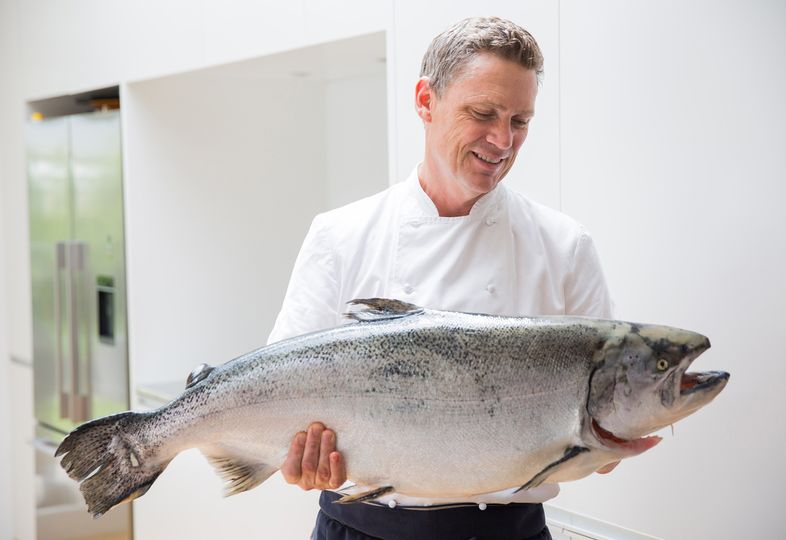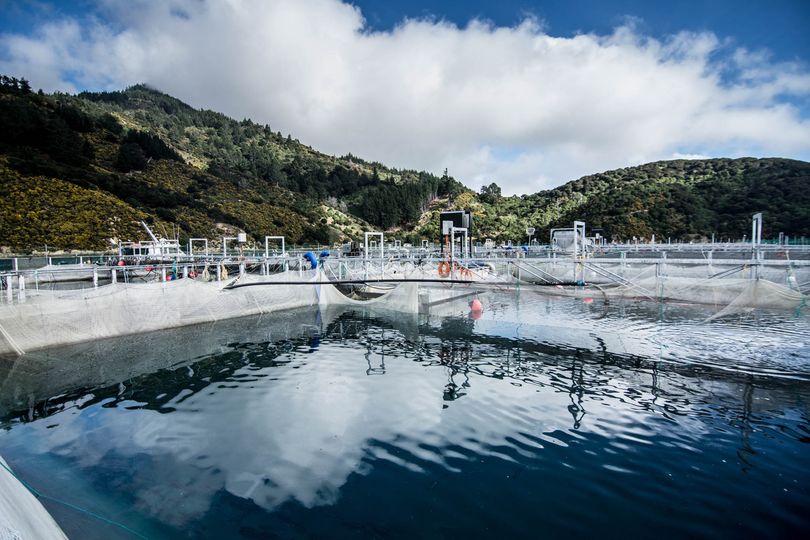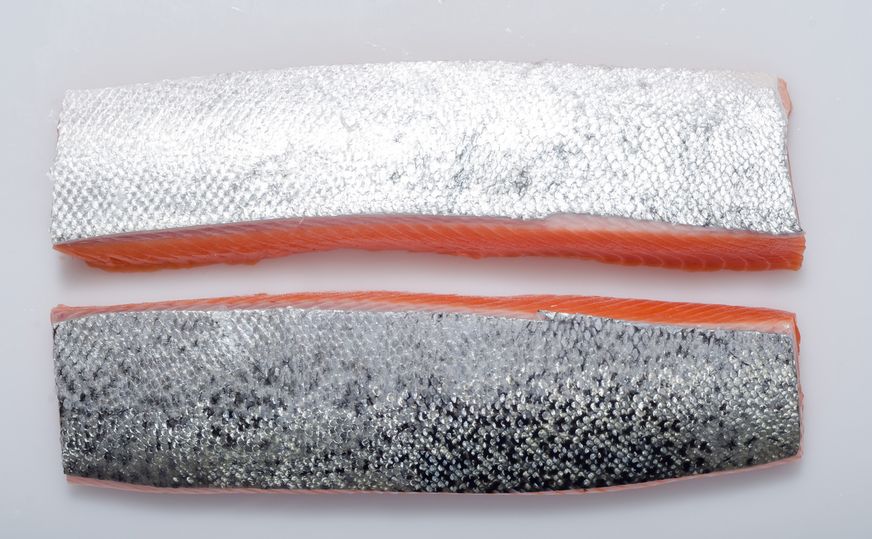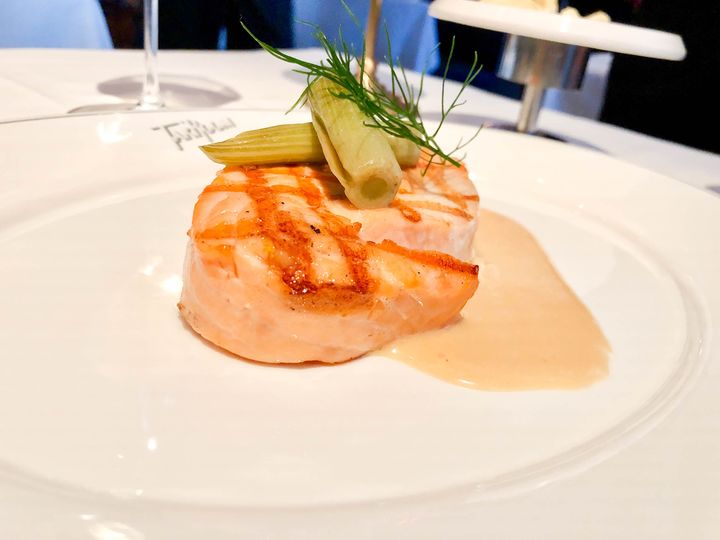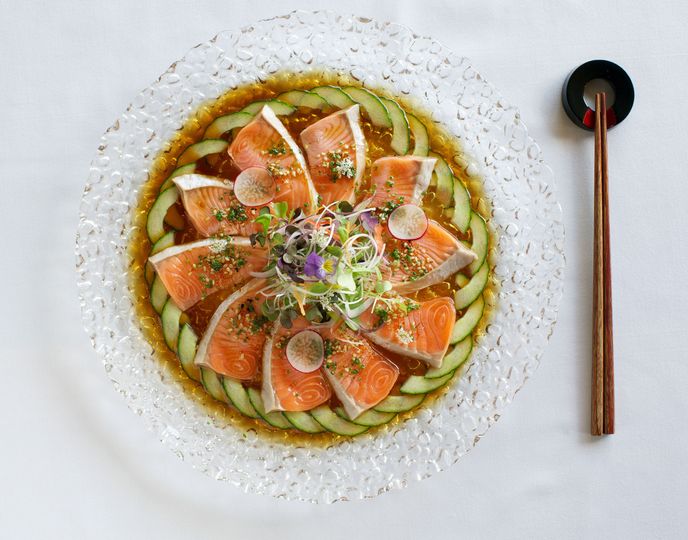This New Zealand salmon is the wagyu beef of the seafood world
Eco-friendly Ōra King salmon from New Zealand is rapidly becoming a chef’s favorite.
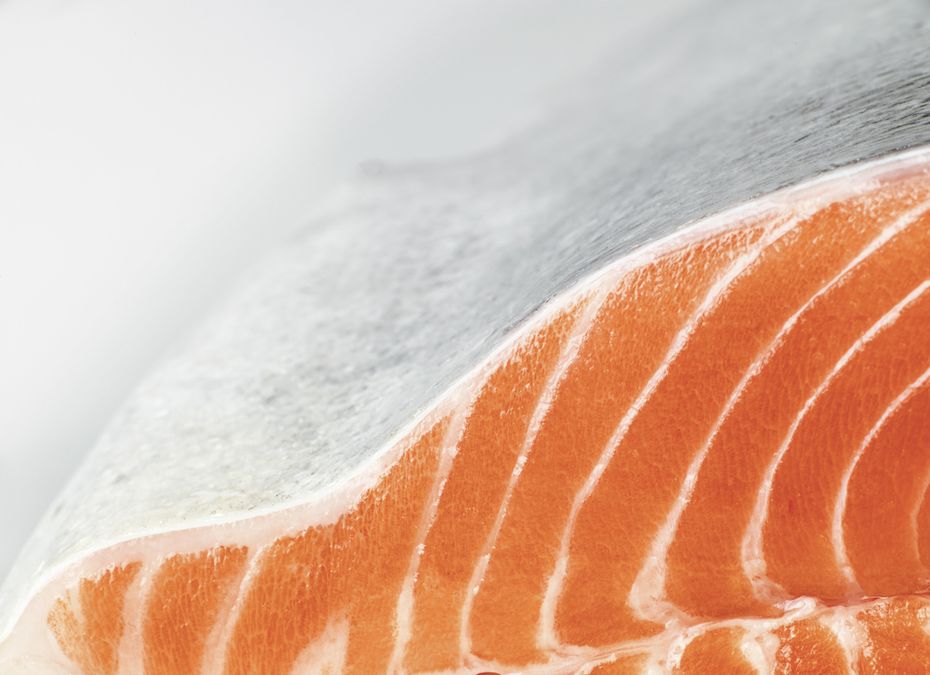
When it comes to luxury fish, tuna rules. It’s the star of almost every extravagant sushi meal and the world’s most expensive fish, going for US$3.1 million in Tokyo earlier this year.
Salmon is arguably the world's workhorse fish. Among the reasons for its popularity: It’s healthy, packed with omega 3-fatty acids and vitamin D, and versatile, served raw, smoked, or cooked, as the protein boost to infinite salad bowls. Now a high-end farmed salmon is here to challenge fancy free-range tuna.
For 25 years, New Zealand's King Salmon Co. has been breeding Ōra King salmon from stock first imported from California in the 1900s.
The result is an especially fatty fish with strikingly marbled meat and a sumptuous melt-in-your-mouth texture, like wagyu beef of the ocean. Chefs compare it to the luxuriousness of raw fatty tuna.
The cost is at least twice the price of commodity Atlantic farmed salmon. It’s available in specialty food stores where it costs US$30 a pound, or about $US4 less than wild king salmon.
Playing in to the breed’s richness and clean taste is the pristine water it’s raised in.
Ōra King eggs are hatched in the South Island’s Takaka Valley in Golden Bay, refreshed with water from Te Waikoropupu Springs, some of the clearest in the world; an average of 14,000 liters of fresh water bubble to the surface every second.
The fish mature in sea farm pens in Marlborough Sounds, where there’s a 98% ratio of water to fish
The roominess (some farms pack up to 50,000 fish in two acres of water) cuts down on waste, sea lice, parasites, and the need for chemicals and antibiotics that have given aquaculture a bad name – and its products an inferior flavor.
Ōra King has scored a “best choice” from the Monterey Bay Aquarium’s Seafood Watch, becoming the first farmed salmon to do so.
The company emphasizes the diet of wild king salmon instead of pellets and visually monitors the feeding to avoid waste; they also don’t use pesticides common in less sustainable aquaculture practices. When an Ōra King reaches around 9 pounds, it’s harvested and graded for marbling and color, among other criteria.
The fish, which represents less than 1% of the world’s salmon supply, is gaining popularity with notable chefs around the country.
Tim Hollingsworth of the L.A. restaurant Otium calls it “prestigious” because of the high fat content; he uses the belly for sashimi and raw bar specials, and roasts or grills cuts from the loin for an entree.
In New York, Iron Chef Masaharu Morimoto likes to accompany the smoked fish with miso mustard at Morimoto. At chef Thomas Keller’s TAK Room at Hudson Yards, the salmon is shaped into a tournedo – a round that usually describes a fancy beef entree – that gets grilled for US$42.
TAK Room’s chef de cuisine Jarrod Huth chose the salmon because he can get it all year, unlike wild salmon, which is seasonal and available for less than six months.
“Food raised in the wild is more exciting, and the flavor and texture of wild salmon are unmatched by anything produced in a controlled setting,” says Huth, “although the Ōra King comes incredibly close.”
While it’s become stylish to compare fish to meat (see: smoked fish turducken), the chef also notes that very few specimens actually resemble beef. “When you temper wagyu, the fat starts to melt; same with bluefin tuna belly. Now I’ve found it with Ōra King, and it’s exciting.”
The tournedos are one of TAK Room’s most popular dishes. Huth serves around 300 orders a week.
In the next two years, New Zealand King Salmon Chief Executive Officer Grant Rosewarne plans to move the pens farther out in the Marlborough Sounds to cooler waters; global warming is heating up the current location. (The company is waiting on final approval from the New Zealand government.)
“Relocation to cooler waters will improve environmental and economic outcomes,” he says, “but fish health is paramount for our product, and we believe relocation will also support continued best practices.” Rosewarne will be participating in the UN General Assembly Ocean Platform meeting later in September.
Of course, a salmon that travels halfway around the world to arrive at plates in the U.S. isn’t the most environmentally correct seafood, even if it does avoid the threat of extinction so often associated with bluefin tuna these days.
Matthew Beaudin, executive chef at the Monterey Bay Aquarium, says he serves it because it’s the closest he’s come in taste and texture to wild king salmon. But “the carbon footprint of our food sources is always a concern. We certainly try to combat this with carbon offsets, as well as by purchasing a majority of our other key ingredients from within 30 miles of our operation,” he says.
Ōra King’s newest product is called Tyee, which it introduced about a year ago. The salmon are raised for five years, growing to around 30 pounds. The result is the equivalent of a hefty tomahawk-style salmon steak, according to TAK Room’s Huth.
“It’s the fattiest salmon I’ve ever tasted. I just have to figure out how to get it now,” he says. Only about 250 have been harvested so far.
